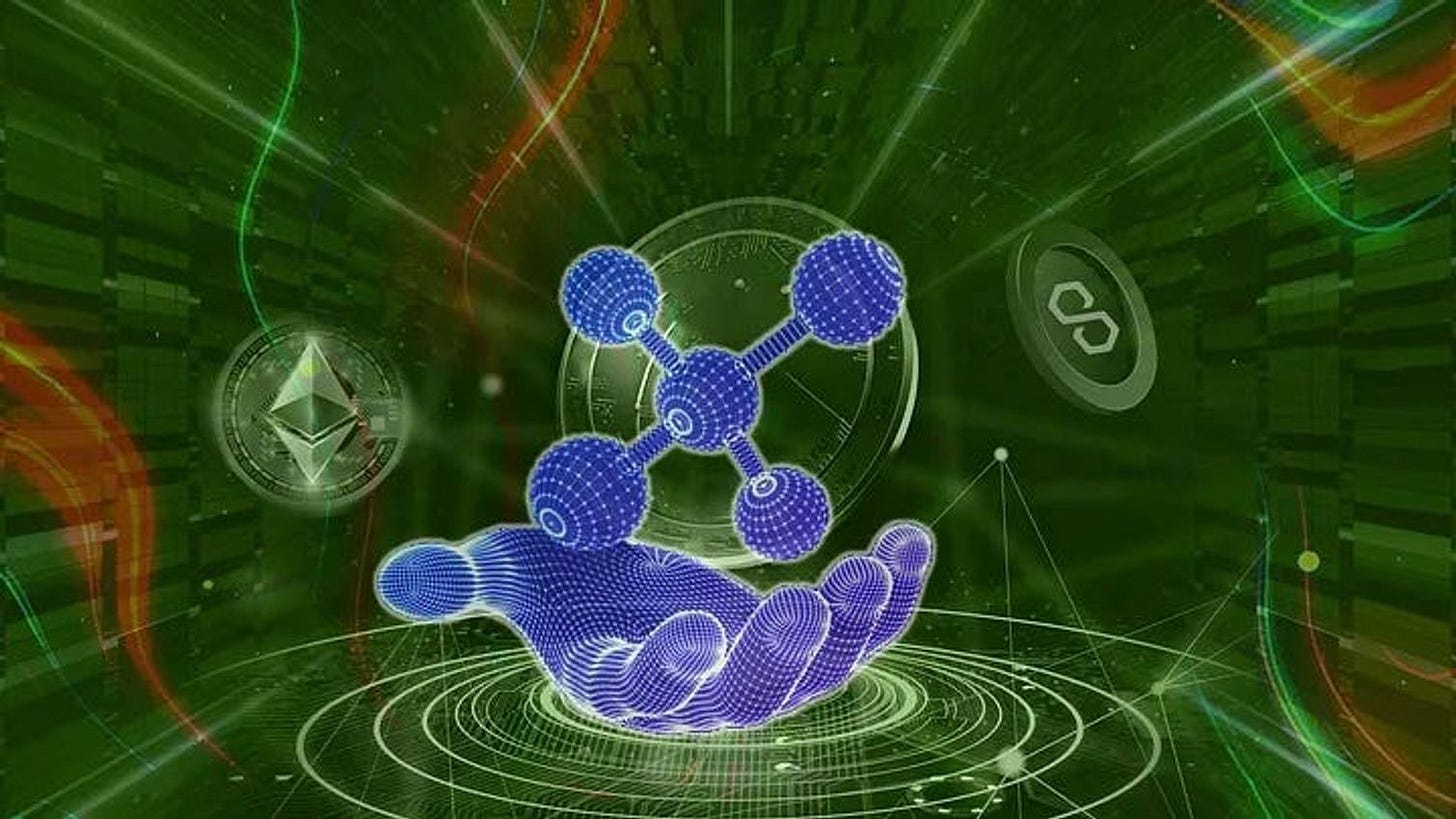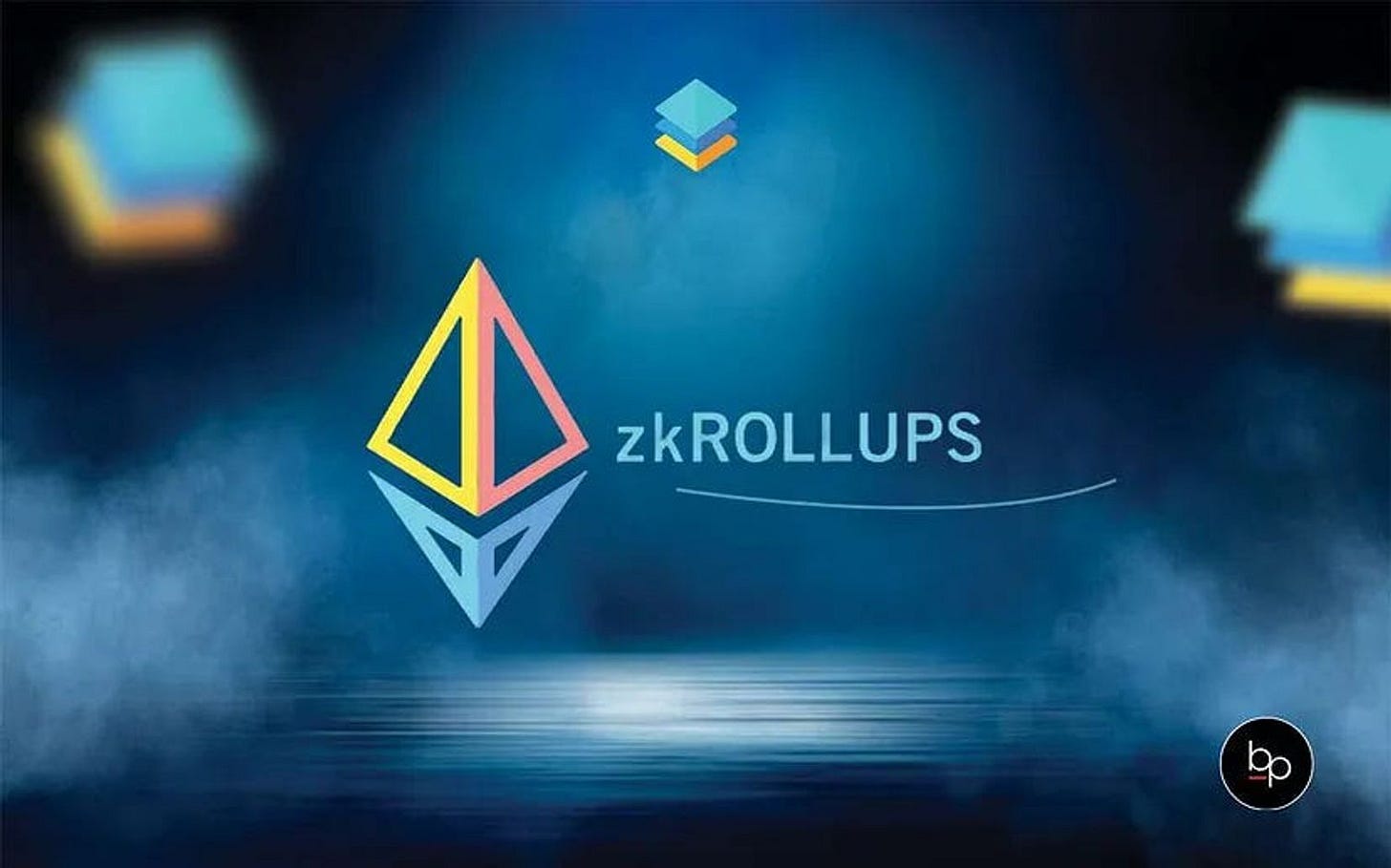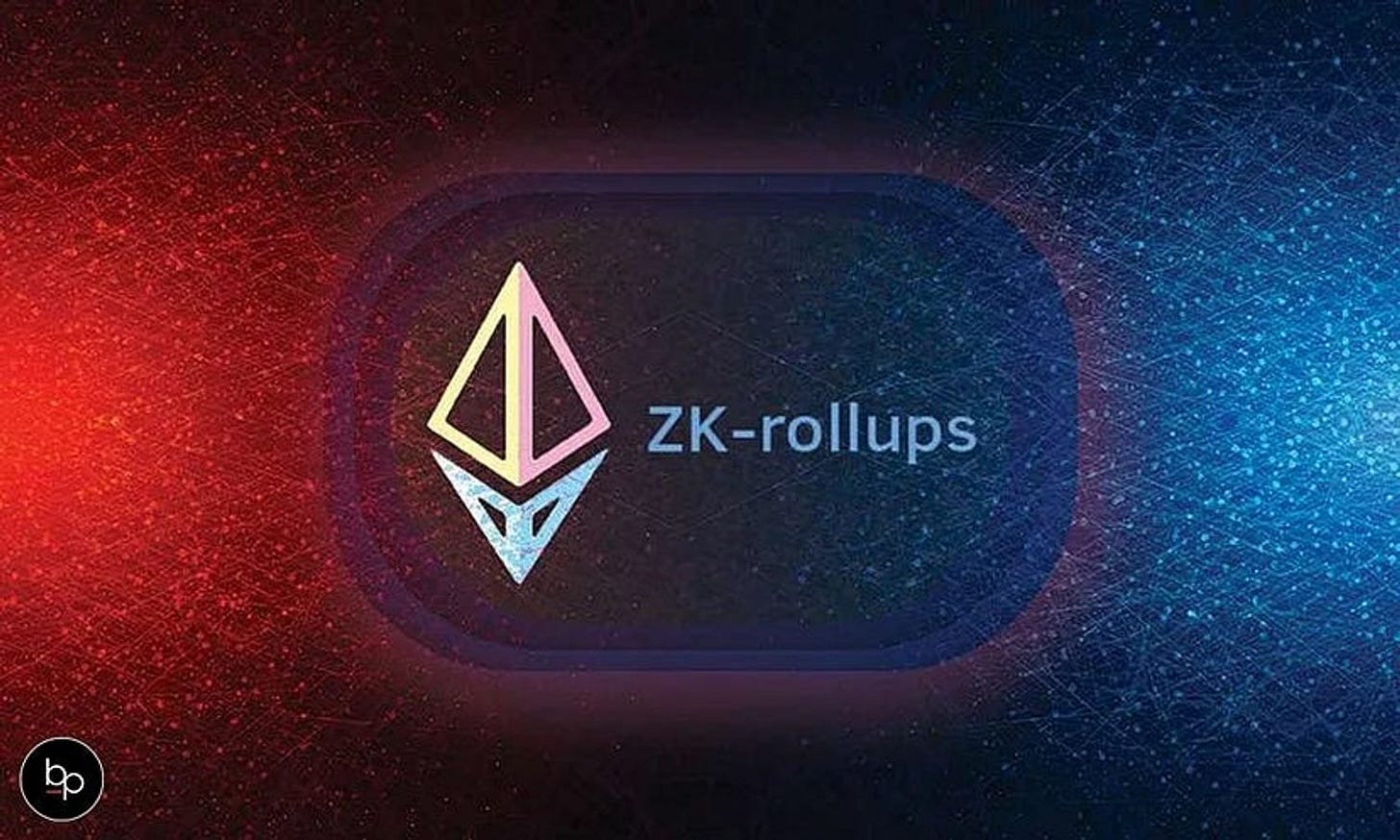“Huh … Where Did That Come From?” | Layer 2 Review
Quick Reads and Hot Links Covering the People and Projects Who Are Scaling Ethereum
Dear Frens,
Once in a while you hear about the launch of a new Layer 2 scaling solution for Ethereum and think “huh … where did that come from?”. If you haven’t seen it during the daily (hourly?) scroll on X then it must not have been around, right? Last week, Scroll Mainnet launched, and if you’re one of the people wondering “Scroll who?”, here’s the announcement which clarifies that the team has been working hard for some time and has now reached a milestone in the development.
What’s the point of this little anecdote? It’s that ‘overnight success’ is normally achieved over a long period of time. In Scroll’s case, Mainnet launch is the result of “three successful testnets spanning over 15 months with extensive testing and rigorous security audits”. According to L2BEAT, TVL has reached around $18M since the official launch on October 17. Obviously it’s nowhere near zkSync Era at $452M TVL, but it’s not a bad start.
Look into the concept of ‘overnight success’ a little further, and you’ll probably come across the Domino Strategy. Not the pizza chain, but the idea that success is made up of incremental steps, taken in sequence, towards the goal. Each action should achieve just enough to allow you to take the next action. Fans of this approach believe it’s a more successful strategy than trying to knock over that last domino without the momentum created by the dominoes along the way.
As the Layer 2 ecosystem builds momentum, we’ll help you stay informed with the latest news about governance proposals, trending projects, hot takes, airdrops, and stats. Thanks for reading the Layer 2 Review, and we hope you enjoy the scroll.
Contributors: Warrior, Boluwatife, Chameleon, WinVerse, jengajojo, thinkDecade, trewkat, HiroKennelly
This is an official newsletter of Bankless Publishing, a BanklessDAO-affiliated project. Please subscribe and share to help us grow our audience as we fulfill our mission to build user-friendly crypto onramps.
🗞️ Ecosystem Updates
🏛️ Plurality Labs: Gov Month Report
🤝 TON Partners with Mantle Network to Boost L2 Solutions
📝 Polygon 2.0 Milestone: POL Contracts Live on Ethereum Mainnet
💰 Clearpool Launches on Optimism and Secures OP Grant to Boost Yields
🔍 Exploring Coinbase’s ‘Base’: $300M Enters Ecosystem in Two Months
💢 Polygon L2 Proposal Roils ApeCoin Community
🔒 Manta Network Partners With Polygon Labs to Integrate zkEVM
🏛 Governance
⭐ Featured Proposals
PIP-29: Polygon Protocol Council
Polygon Labs introduced a proposal to create a Protocol Council governance body “responsible for performing regular and emergency upgrades to system smart contracts, i.e. components of Polygon protocols implemented in the form of smart contracts on Ethereum.”
The Council’s “main objective is to perform regular and emergency changes with varying timelocks and internal consensus requirements to the Polygon 2.0 components.” According to the proposal, a 13-member council is part of the overall Polygon 2.0 upgrade that seeks to create “an on-chain, trust-minimized, and community-based framework for efficient and decentralized decision-making, which will be formalized in future proposals.”
Some of the proposed members include crypto-sleuth ZachXBT and ETH mega-bull Anthony Sassano.
💬 Proposals in Discussion
Arbitrum
Optimism
Polygon
CELO
Polygon and zkSync teams bid to lure CELO to join their tech stack:
Polygon Labs’ Proposal for Celo to Become an ETH L2 Using Polygon Chain Development Kit ( CDK )
Matter Labs’ Proposal for Celo to Join ZK Nation and Become an ETH L2 Using ZK Stack
🔥 Hot News
L2 Article Review
Ethereum Scaling Solutions
Author: Sandeep | Editors: Jake and Stake & Hiro Kennelly | Designer: Chameleon
Sandeep discusses the need for scaling on the Ethereum network and the different solutions available to achieve this. Scaling is necessary when the network reaches capacity and costs of using the blockchain increase. Read this detailed but straightforward look at the different types of scaling solutions such as Rollups, Plasma, and state channels. Take Plasma scaling, for example, which is a Layer 2 scaling solution proposed in 2017 by Joseph Poon and Vitalik Buterin. It operates by using a combination of smart contracts and cryptographic verifications (aka Merkle Trees) to enable fast and cheap transactions.
"The unique feature of Plasma is the ability to create an infinite number of child chains, and create them on top of other chains in a tree structure. Plasma’s similarity with Rollups is the use of fraud proofs."
ZK-Rollups Transform the Trilemma to Dilemma
Author: tommasogualtieri.eth | Editors: Hiro Kennelly and trewkat | Designer: Chameleon
The Blockchain Trilemma has been a tough nut to crack in network architecture. However, with the emergence of scaling solutions, possibilities to finally overcome this obstacle are within reach. This article explains how the ZK-rollup race on Ethereum transforms the trilemma into a dilemma, pitting performance against compatibility.
"Vitalik Buterin, in his article on the different types of ZK-EVMs, identified them as the ideal solution for scalability, while anticipating the need for a long and complex development process. On that occasion, Vitalik gave rise to what I refer to as ‘the Dilemma’ — the fact that ZKs require developers to balance two competing performance metrics."
Introduction to Zero-Knowledge Rollups
Author: klouie | Editor: Kornekt | Designer: Tonytad
ZK-rollups leverage zero-knowledge proofs, a cryptographic technique that allows one party to prove knowledge of certain information without revealing the information itself. By leveraging zero-knowledge proofs to process transactions off chain while maintaining the security and trustlessness of the main chain, ZK-rollups hold the potential to transform the way blockchains operate. This article focuses on two popular ZK-rollups: zkSync Era and Starknet.
“By moving most of the computation off-chain and only submitting proofs to Mainnet, both zkSync and Starknet can process complex smart contracts more efficiently. This alleviates congestion and reduces gas fees.”
Get launched into the ZK realm with this introductory piece.
Understanding ZK-EVM Types
Author: Lisa Akselrod | Editor: Hiro Kennelly and trewkat | Designer: Chameleon
It’s no secret that zk-EVM chains represent a promising frontier in blockchain technology, offering solutions to Ethereum's scalability and privacy challenges. This non-technical explanation of the differences between the types of zk-EVM has been one of Bankless Publishing’s most popular articles, going beyond the core principles to describe each type and use case.
“In the zk-EVM domain, distinctions arise from Ethereum/EVM-equivalence levels, the influence of ZK-unfriendly elements on proof generation costs and speed, and the intricacy of circuit implementation (such as VM building or state trees).”
Read the full article by Lisa Akselrod to learn about the key differences between the various types of zk-EVM.
A Non-Technical Primer on ZK-Rollups
Author: sianjon | Editors: Hiro Kennelly and Kornekt | Designer: Tonytad
ZK-rollups, a Layer 2 blockchain scaling solution, bundle multiple transactions into one, verifying their validity without revealing specific details. This technology operates by performing all computations offchain and storing just a hash of the results onchain for public verification. The benefits of ZK-rollups include enhanced privacy, quicker transaction settlements, and increased security via zero-knowledge proofs. However, they also pose challenges related to computational intensity. The concept originated in the 1980s and has been integrated into various modern blockchain projects, offering solutions ranging from anonymous payments to decentralized identity verification and combating disinformation.
"Optimistic rollups assume transactions are valid by default and only run computation via a fraud-proof. Fraud proofs are a type of proof submitted by a verifier that challenges a transaction state."
Check out sianjon’s highly readable intro to ZK-rollups!
📈 Data
Total Value Locked on L2s is Nearly 12 Billion!

Top Ten Projects by Total Value Locked:

🔭 Project Watch
Arbitrum
Top Projects by TVL in the Last 7 Days

Trending NFT Collections by Volume

Top Social and Web3 dApps

Optimism
Top Projects by TVL in the Last 7 Days

Trending NFT Collections by Volume

zkSync Era
Top Projects by TVL in the Last 7 Days
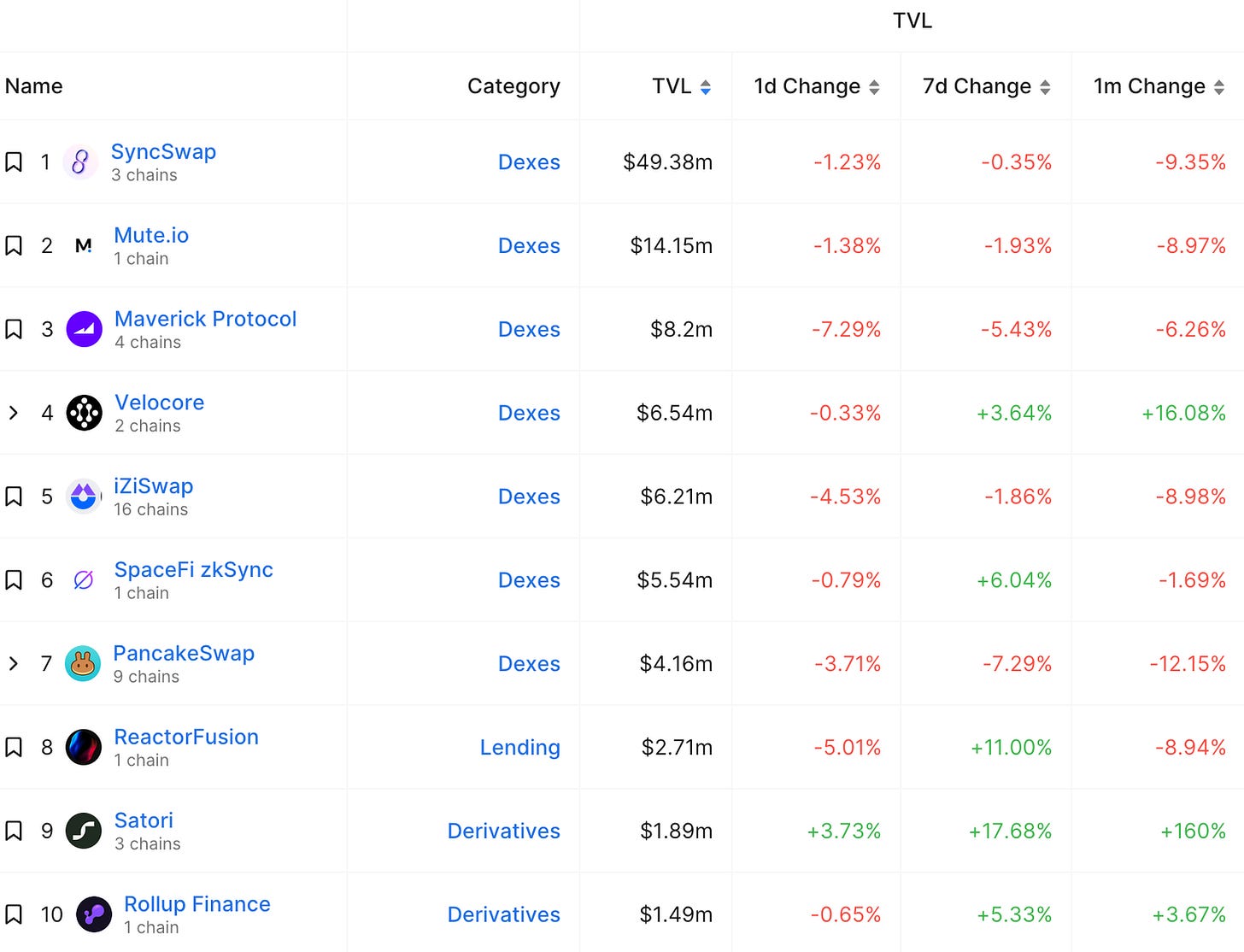
Polygon zkEVM
Top Projects by TVL in the Last 7 Days
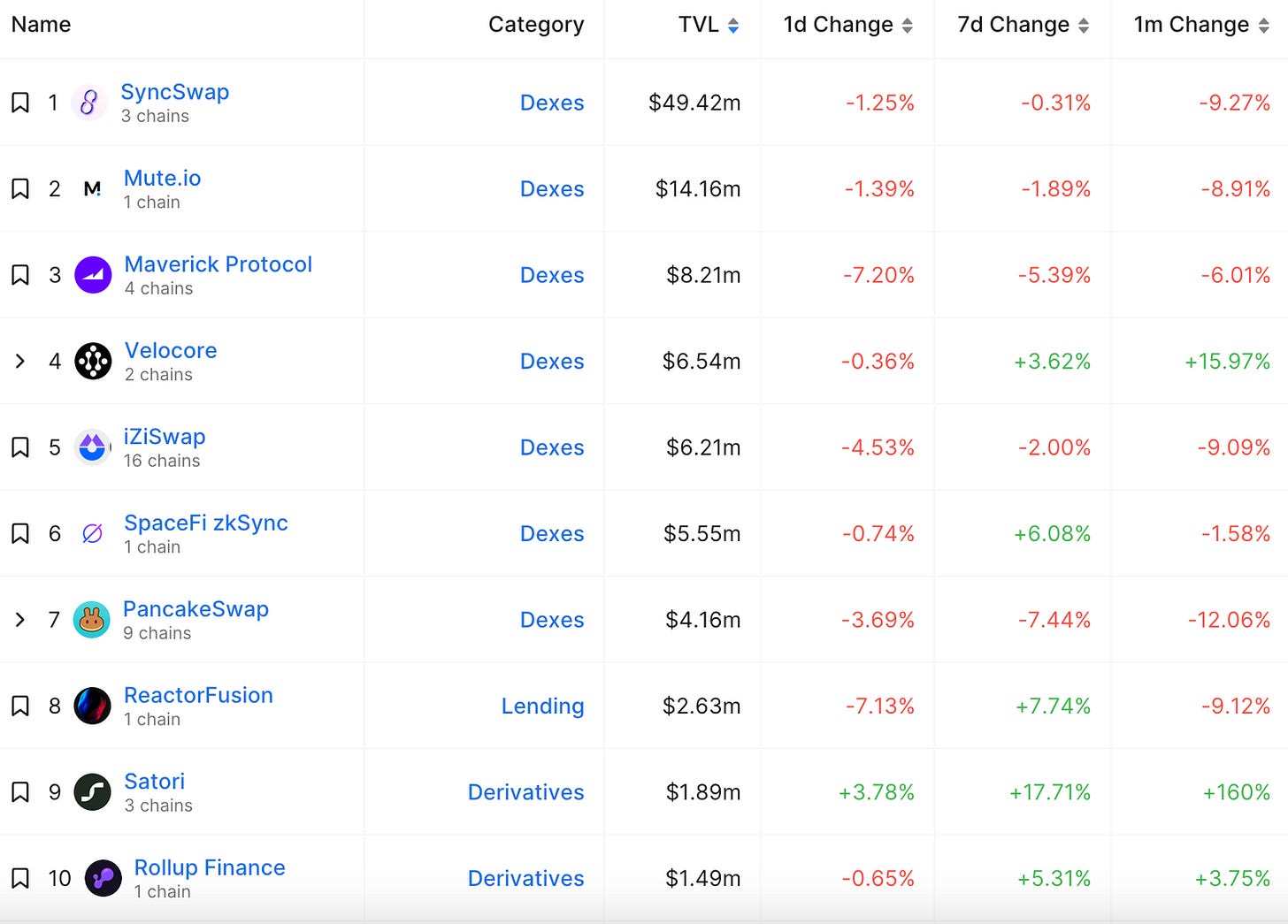
🔥 L2 Fees and Costs Update
Transaction Fees as of October 25, 2023:

Security Costs as of October 25, 2023:





